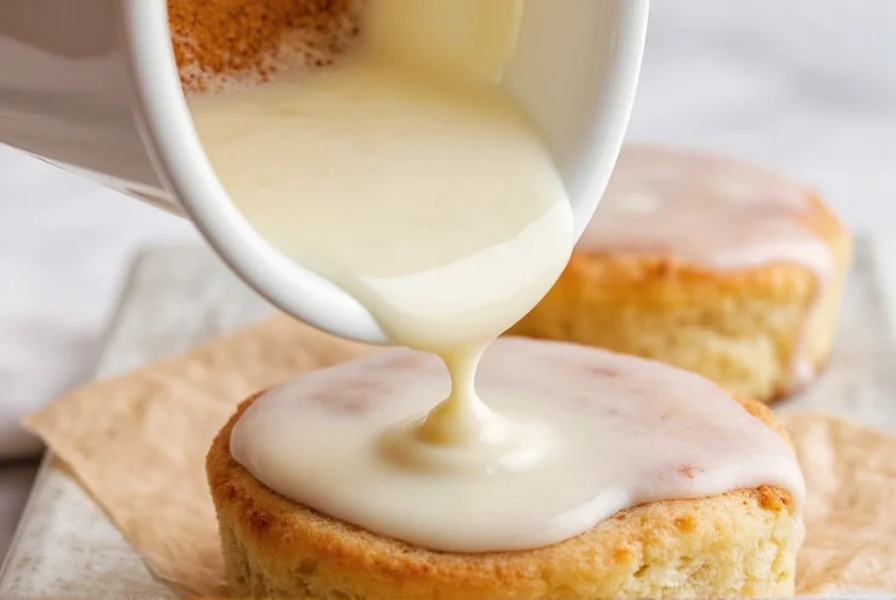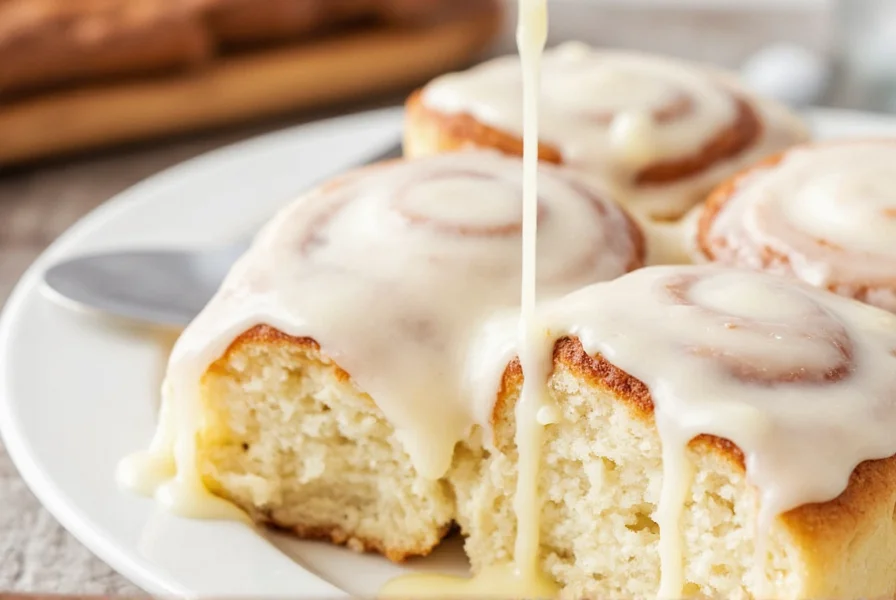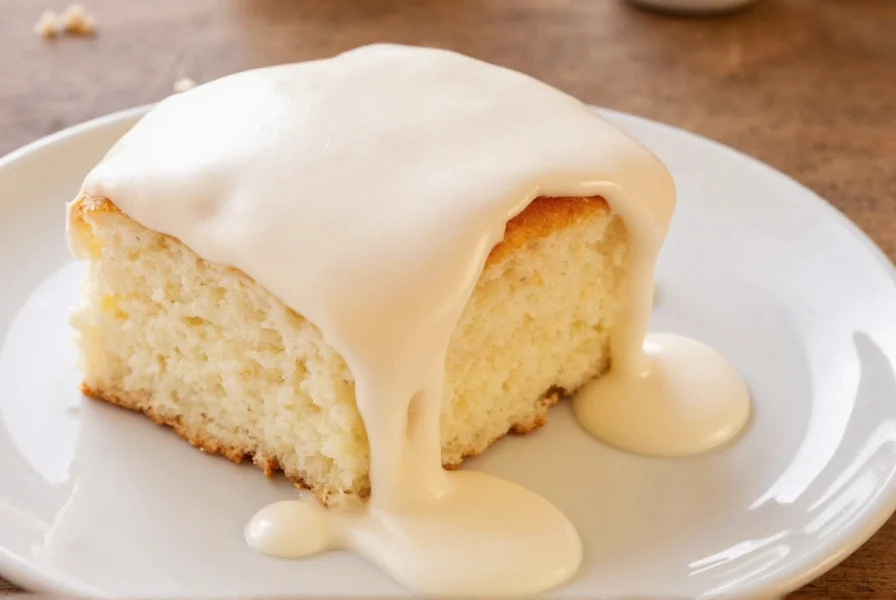The perfect homemade cinnamon roll icing requires just 4 basic ingredients: 1 cup powdered sugar, 2 tablespoons milk, 1 tablespoon softened butter, and 1/2 teaspoon vanilla extract. Whisk until smooth, then drizzle over warm cinnamon rolls for that classic sweet finish. This simple recipe creates a silky, pourable icing that sets slightly but remains tender—never gritty or overly sweet.
Creating the ideal homemade cinnamon roll icing is simpler than most bakers realize. Forget store-bought tubes with artificial flavors and questionable ingredients. With pantry staples and proper technique, you can craft an icing that elevates your freshly baked rolls from good to extraordinary. The key lies in understanding ingredient ratios and texture control—critical factors that separate mediocre icing from perfection.
Why Homemade Icing Beats Store-Bought Every Time
Commercial cinnamon roll icings often contain corn syrup, preservatives, and artificial flavors that dull the natural sweetness you want. Homemade versions let you control sweetness levels, texture, and flavor intensity. Most importantly, fresh icing absorbs slightly into warm rolls, creating that signature moist crumb we all crave—a quality no pre-made icing can replicate.
Essential Ingredients for Perfect Cinnamon Roll Icing
Understanding each component's role ensures consistent results:
| Ingredient | Function | Pro Tip |
|---|---|---|
| Powdered Sugar | Base sweetness and structure | Sift to prevent lumps—never substitute granulated sugar |
| Whole Milk | Adjusts consistency | Start with 1 tablespoon less than recipe, add gradually |
| Unsalted Butter | Richness and mouthfeel | Must be softened, not melted |
| Pure Vanilla | Flavor enhancer | Double the amount for bakery-style depth |
Step-by-Step Icing Preparation
Follow these professional techniques for flawless results:
- Prepare ingredients properly—bring butter and milk to room temperature. Cold ingredients cause seizing.
- Sift powdered sugar into mixing bowl to eliminate lumps before adding liquids.
- Cream butter briefly with vanilla (15 seconds max) before incorporating sugar.
- Add milk incrementally, one teaspoon at a time, until desired consistency.
- Whisk vigorously for 60 seconds to incorporate air and create silky texture.

Achieving the Perfect Icing Consistency
Texture determines whether your icing pools beautifully or runs off your rolls. The ideal homemade cinnamon roll icing should:
- Coat the back of a spoon thickly but drip slowly
- Form ribbons that momentarily hold shape when lifted
- Absorb slightly into warm rolls without soaking through
Troubleshoot texture issues:
- Too thick? Add milk ½ teaspoon at a time until pourable
- Too thin? Incorporate additional powdered sugar (1 tablespoon increments)
- Grainy texture? Sugar wasn't sifted or butter was too cold
Flavor Variations for Special Occasions
Customize your easy homemade cinnamon roll icing with these professional touches:
- Cream cheese version: Replace 1 tablespoon butter with 2 ounces softened cream cheese for tangy richness
- Lemon twist: Add 1 teaspoon zest plus ½ teaspoon juice for bright contrast
- Bourbon enhancement: Substitute 1 tablespoon milk with quality bourbon
- Maple infusion: Replace 1 tablespoon milk with pure maple syrup

Application Techniques for Professional Results
How you apply icing matters as much as the recipe itself. For bakery-quality presentation:
- Wait until rolls cool 5-7 minutes—warm (not hot) rolls absorb icing perfectly
- Use a piping bag or zip-top bag with corner snipped for controlled drizzling
- Apply in zig-zag pattern across roll tops for even coverage
- Let set 3-5 minutes before serving to prevent sliding
Storage and Reheating Guidelines
Homemade cinnamon roll icing maintains quality when stored properly:
- Refrigerate in airtight container for up to 5 days
- Revive hardened icing by microwaving 5-second intervals
- Freeze portions in ice cube trays for up to 2 months
- Always bring to room temperature before reapplying
Troubleshooting Common Icing Problems
Solve these frequent issues with simple fixes:
- Icing cracks when applied: Rolls were too hot—cool longer before icing
- Icing soaks through rolls: Too much liquid—add more powdered sugar next time
- Dull flavor: Boost with pinch of salt or extra vanilla
- Separation occurs: Butter was too warm—rewhisk vigorously
Why This Recipe Works Every Time
This perfected homemade cinnamon roll icing formula balances science and simplicity. The 4:1 powdered sugar to liquid ratio creates ideal viscosity while allowing flavor to shine. Unlike recipes using heavy cream or cream cheese as primary ingredients, this version complements rather than overwhelms the delicate roll flavor. Professional bakers rely on this exact proportion for consistent results across batches—a testament to its reliability for home cooks seeking that authentic bakery experience.











 浙公网安备
33010002000092号
浙公网安备
33010002000092号 浙B2-20120091-4
浙B2-20120091-4